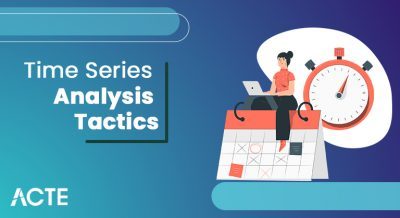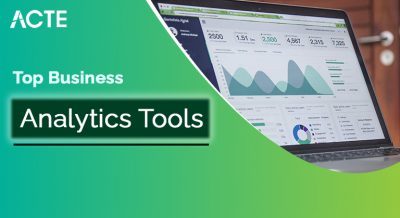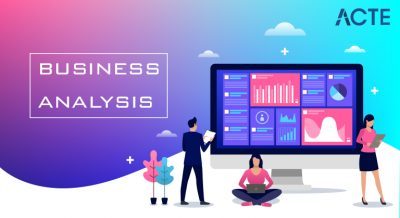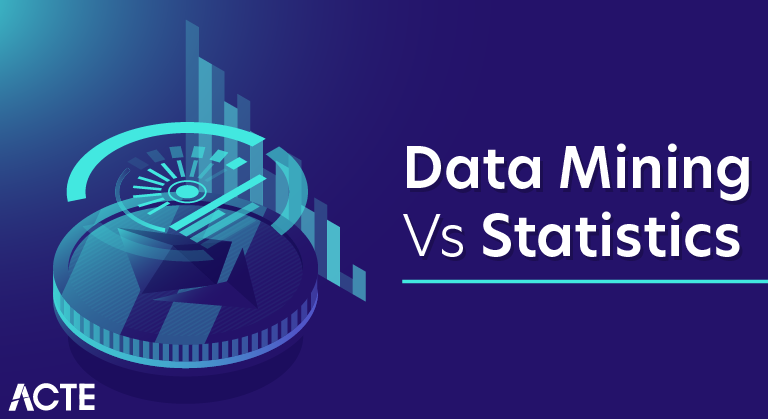
Data Mining
- It is the process of extracting previously unknown, comprehensible and actionable information from large data warehouses and uses it to make a crucial business decision. So in data modeling data from customers are mined to get business insight. Origin of data modeling is statistics, machine learning, and artificial intelligence.
- In today’s world all organizations are collecting data from social media, Sensor data, websites logs etc. almost everything emits data as the use of IoT is increasing and data mining is the process of extracting useful information from this raw data to predict the unknown patterns.
Process of Data Mining:
Data mining process is break down into below 5 stages:
- Data Exploration/ Gathering: Identify data from different data sources and load it to decentralized data warehouses.
- Store and Manage Data: Store the data in distributed storage (HDFS), in-house servers or in a cloud (Amazon S3, Azure).
- Modeling: Business team, Developers will access the data and apply sampling and transformation in data and remove corrupt, irrelevant, inaccurate, incomplete data.
- Deploying Models: Based on the results from modeled data sort the data based on users expectations or results.
- Visualize Data: Presents the data in the graphs or tables or charts or decision tree format so that end users can understand.
Data Mining Applications:
Data mining is used in many domains following are some highly used domains −
- Market Analysis and Management
- Corporate Analysis & Risk Management
- Fraud Detection
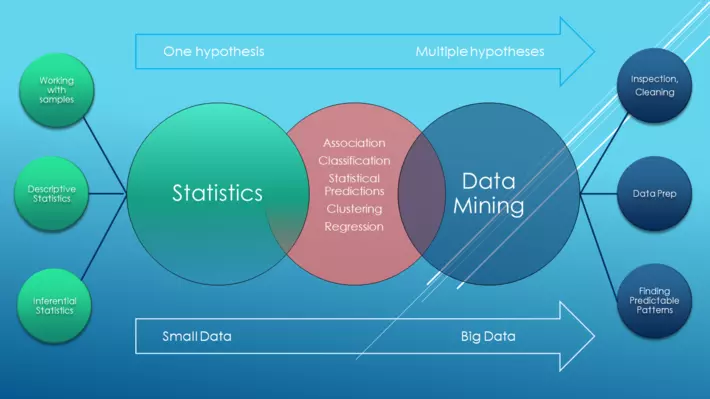
- Statistics is the analysis and presentation of numeric facts of data and it is the core of all data mining and machine learning algorithms.
- It provides analytical techniques and tools to apply on large volume data sets. Statistics include planning, designing, collecting data, analyzing, drawing meaningful interpretation and reporting of the research findings and due to this statistics is not only limited to a mathematician, business analysts are also using it.
- To get the desired output or quantify data statistics uses probability, designing surveys and experiments.
- Data mining is the beginning of data science and it covers the entire process of data analysis whereas statistics is the base and core partition of data mining algorithms.
- Data Mining is an exploratory analysis process in which we explore and gather the data first and build a model on the data to detect the pattern and make theories on them to predict the future outcome or to resolve the issues.
- Whereas statistics is the confirmation process in which first theories are made and then validation is applied on that theory to test the datasets.
- As day by day data size is increasing, data format is also changing mostly received data is unstructured data which may contain numeric or non-numeric data and both types of data used for data mining but statistics only numeric type of data is used for the probabilistically and mathematical calculation and prediction.
- Data mining is an inductive process and uses an algorithm like a decision tree, clustering algorithm to derive data partition and generate hypotheses from data whereas statistics is the deductive process i.e. it does not involve any predictions it is used to derive knowledge and verify hypotheses.
- Data mining is not much concerned about collection or gathering of data as it is exploratory data analysis also data mining is mostly software and computational process for discovering patterns on large datasets whereas statistics is more about the collection of data as to get confirmation on the predicted data we need to gather data analyze it to answer questions.
- Collected data can be Quantitative, Qualitative, Primary or secondary data.
- Data cleaning in the data mining is the first step as it helps to understand and correct the quality of data to get accurate final analysis. In data cleaning, a user has the ability to clean inaccurate or incomplete data.
- Without proper data quality, your final analysis will suffer in accuracy or you could potentially arrive at the wrong conclusion. Whereas in Statistics after collection of data from various sources data cleansing is done and on this cleaned data statistical methods are applied for the confirmatory analysis.
- Data mining is a process of digging deep in the previously available unknown but actionable information from large databases for using it to make some crucial decisions.
- A set of methods are used to find patterns and relationships within the available data.
- It is a confluence of various processes including statistics, machine learning, database management, artificial intelligence (AI) and data pattern recognition etc. whereas Statistics is an important component of data mining that offers effective analytics techniques and tools for dealing with a large amount of data for benefiting businesses.
- It is a science of data learning that covers everything from collecting to using data effectively.
- Data Mining is essentially applied commercial applications like financial data analysis, retail industry, telecommunication, biology and other scientific detection. Whereas Statistics is used in every data sample to draw out a set of new information.
- It describes the character of the data to be analyzed and explores the relation of the data. It uses predictive analytics to run scenarios that help to decide about the future actions. On the other hand, statistics gives breathing into lifeless data.
- Some of the popular evolving trends in Data mining are application exploration, visual data mining, biological data mining, web mining, software mining, distributed data mining, real data mining and lots more.
- And Statistics help to identify new patterns in the available unstructured data.
The differences between Data Mining vs Statistics are explained in the points presented below:
| Data Mining | Statistics |
|---|---|
| Explore and gather data first, build models to detect patterns and make theories. | It provides theories to test using statistics. |
| Data used is Numeric or Non numeric. | Data used is Numeric. |
| Inductive Process (Generation of new theory from data) | Deductive Process (Does not involve making any predictions) |
| Data collection is less important. | Data collection is more important. |
| Data Cleaning is done in data mining. | Clean data is used to apply statistical methods. |
| Needs less user interaction to validate models hence, easy to automate. | Needs user interaction to validate models hence, difficult to automate. |
| Suitable for large data sets | Suitable for smaller data sets |
| It’s an algorithm which learns from data without using any programming rule. | Formalization of relationship in data in the form of mathematical equation |
| Use heuristics think (rules used to form judgments and make decisions) | Does not have scope for heuristic thinking. |
| Classification, Clustering, Neural network, Association, Estimation, Sequence based analysis, Visualization | Descriptive Statistical, Inferential Statistical |
| Financial Data Analysis, Retail Industry, Telecommunication Industry, Biological Data Analysis, Certain Scientific Applications etc. | Demography, Actuarial Science, Operation research, Biostatistics, Quality Control etc. |


